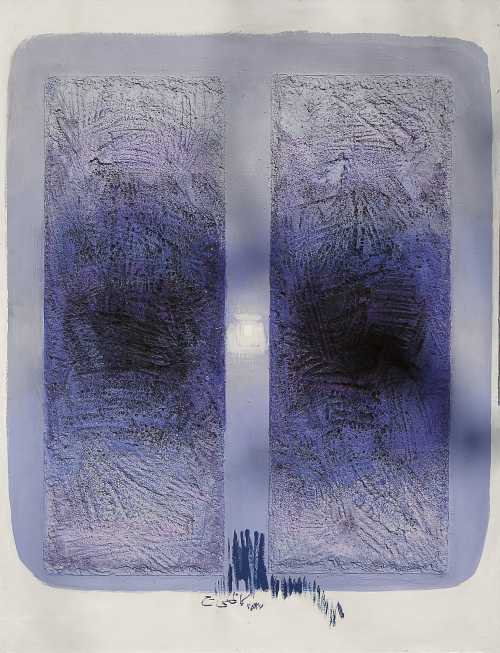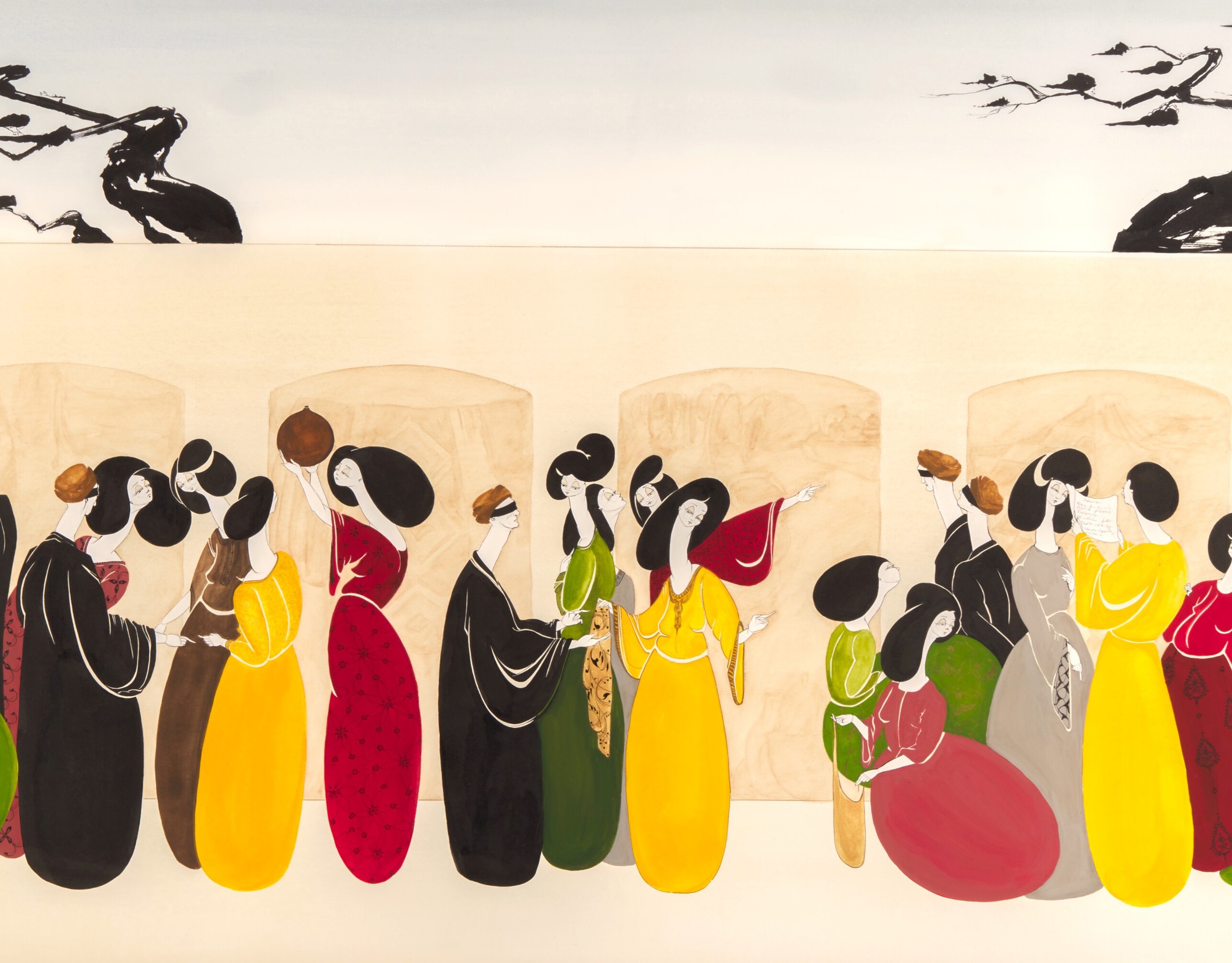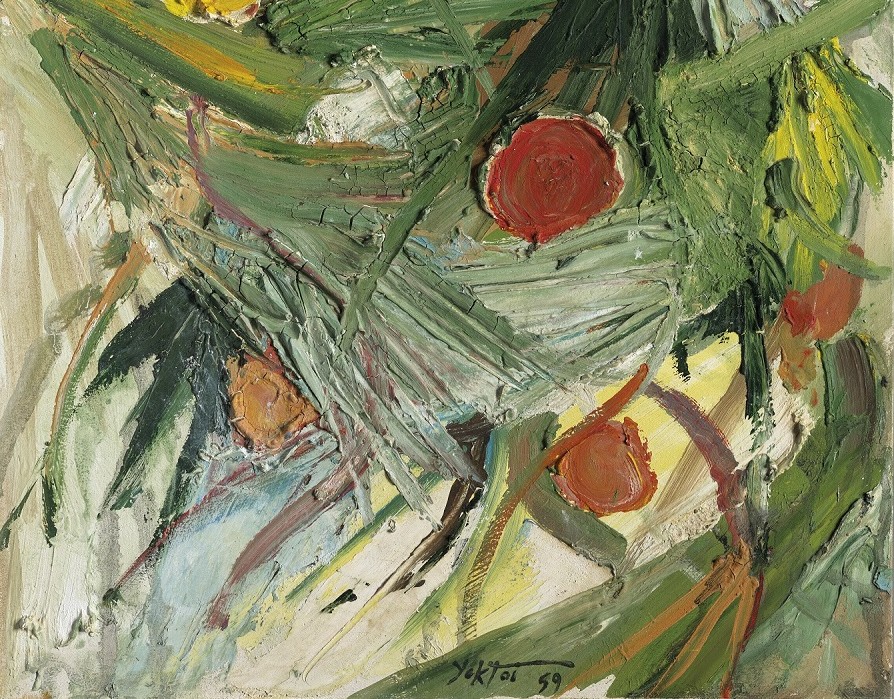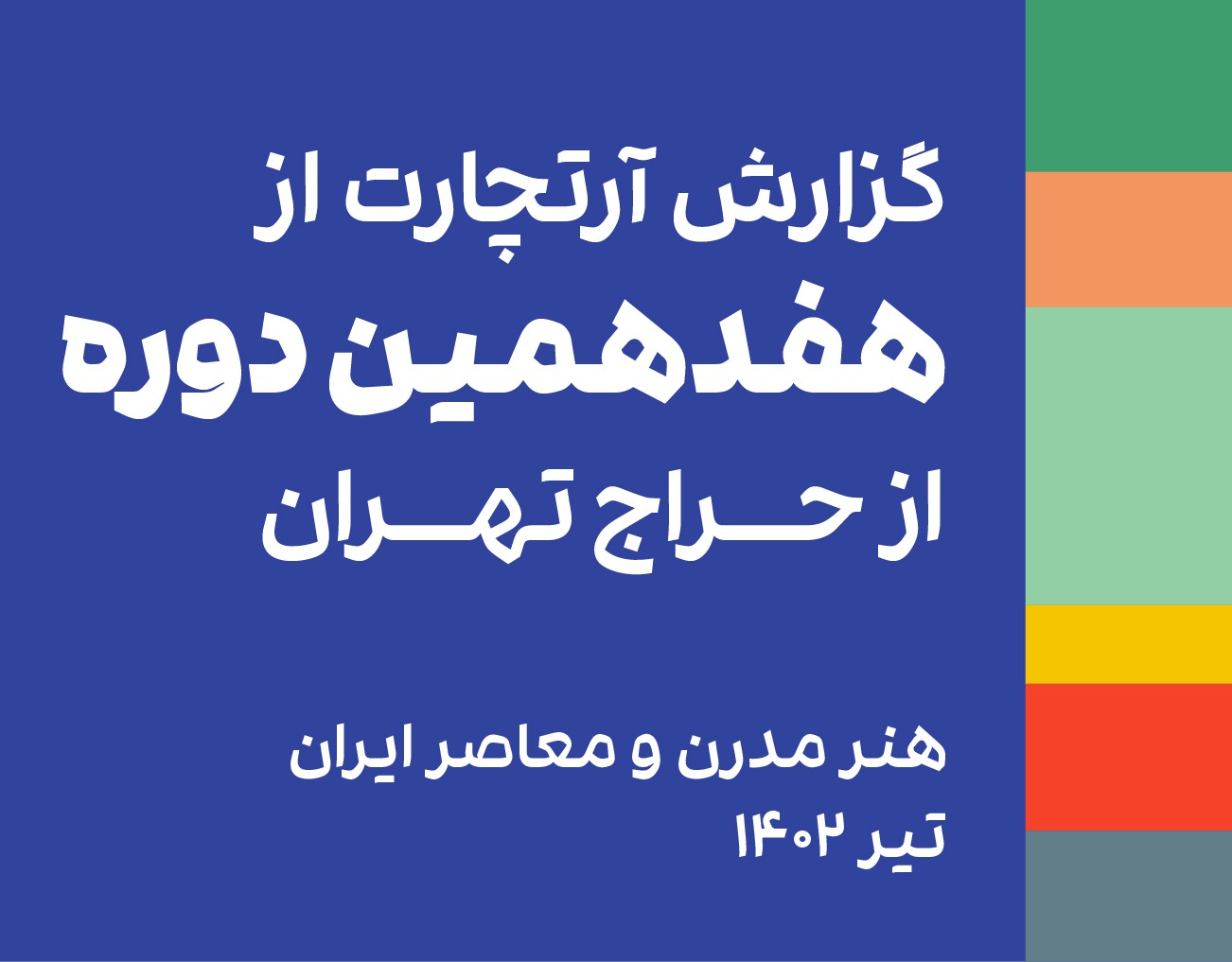About Hossein Kazemi
Hossein Kazemi is one of the pioneers of modern Iranian painting, blending oriental perspectives with universal styles.
From 1942 to 1945, he studied painting at the University of Tehran. By the time of his graduation, he had already exhibited several of his paintings in the "Exhibition of Fine Arts of Iran," organized by the Association of Cultural Relations between Iran and the Soviet Union. Between 1947 and 1949, Kazemi held several exhibitions of his works. In 1950, he founded the Apadana Hall in collaboration with Mahmoud Javadipour and held numerous exhibitions there. In 1953, he went to Paris to study at the School of Fine Arts. Upon his return to Tehran in 1960, he held an exhibition of his works at the Reza Abbasi Hall.
Kazemi served as the director of the Tehran Boys' Fine Arts Conservatory and was in charge of the Decorative Arts Academy. He received gold medals at the first and second Tehran Biennials in 1958 and 1960. Later in life, Kazemi moved to France, where he continued his artistic endeavors.
A period of Kazemi's works showcases realism in the Impressionist style. His interest in abstraction became increasingly prominent and was perfected in his later works. The theme of contradiction, as well as the opposition and unity of contrasting elements, is a recurring motif in his art. This is particularly evident in his semi-abstract collection, "Flowers and Stones."
Jalal Sattari writes about Kazemi's "Flowers and Stones" collection: "These stones and flowers are the dual conscience of human beings, achieving perfection only in the light of love, where they become harmonious, integrated, and fertile."
From 1942 to 1945, he studied painting at the University of Tehran. By the time of his graduation, he had already exhibited several of his paintings in the "Exhibition of Fine Arts of Iran," organized by the Association of Cultural Relations between Iran and the Soviet Union. Between 1947 and 1949, Kazemi held several exhibitions of his works. In 1950, he founded the Apadana Hall in collaboration with Mahmoud Javadipour and held numerous exhibitions there. In 1953, he went to Paris to study at the School of Fine Arts. Upon his return to Tehran in 1960, he held an exhibition of his works at the Reza Abbasi Hall.
Kazemi served as the director of the Tehran Boys' Fine Arts Conservatory and was in charge of the Decorative Arts Academy. He received gold medals at the first and second Tehran Biennials in 1958 and 1960. Later in life, Kazemi moved to France, where he continued his artistic endeavors.
A period of Kazemi's works showcases realism in the Impressionist style. His interest in abstraction became increasingly prominent and was perfected in his later works. The theme of contradiction, as well as the opposition and unity of contrasting elements, is a recurring motif in his art. This is particularly evident in his semi-abstract collection, "Flowers and Stones."
Jalal Sattari writes about Kazemi's "Flowers and Stones" collection: "These stones and flowers are the dual conscience of human beings, achieving perfection only in the light of love, where they become harmonious, integrated, and fertile."
The Most Expensive Artwork
At Auctions
First Attendance
31 October 2007
# Attendance
70
# Artworks
97
Average Realized Price
37,278 USD
Average Min Estimate
25,208 USD
Average Max Estimate
35,761 USD
Sell-through Rate
78.351%
Average Growth of Artwork Worth
35.805%
Timeline
Arab, Iranian & Turkish Art / Modern & Contemporary Middle Eastern Art | N°22 auction
15 December
Middle East / 20th Century Art / n°21 auction
6 July
The 23rd Tehran - Modern and Contemporary Iranian Art auction
22 May
The 22nd Tehran - Modern, Classic and Traditional Iranian Art auction
14 February
Modern and Contemporary Collector exhibition
7 February
Timeless Creation exhibition
25 October
The 20th Tehran- Modern and Contemporary Iranian Art auction
5 July
TREASURES & TRIBUTES mid year Fine Art auction
19 June
A Collection exhibition
10 May
Duplex Beirut – Paris Middle-East Modern & Contemporary auction
25 April
The Artwork of Legendary Artists exhibition
9 February
The 19th Tehran -Classic and Modern Iranian Art auction
24 January
Middle-East Modern & Contemporary Art auction
30 November
The 17th Tehran Modern and Contemporary Iranian Art auction
18 July
Middle Eastern Modern and Contemporary Part I auction
19 December
MIDDLE EAST MODERN & CONTEMPORARY auction
5 July
MODERN ART - CONTEMPORARY ART auction
8 April
The 15th Tehran- Modern Iranian Art auction
14 January
Tableaux, Sculptures, Extreme Orient, Bijoux auction
21 November
The Mana Jalalian Collection: A Rare Collection of Iranian Modern Art exhibition
15 November
Regards d'Orient Modern and Contemporary Art from ME.NA (Middle East & North Africa) auction
27 October
Collector 7 exhibition
5 February
The 13th Tehran- Modern and Contemporary Iranian Art auction
15 January
Modern and Contemporary Middle Eastern Art auction
24 November
Contemporary Art auction
26 October
Collector 6 exhibition
18 September
Modern & contemporary paintings, sculptures, Art Deco auction
12 December
Modern and Contemporary Middle Eastern Art Online Sale auction
12 December
XIXTH, MODERN & CONTEMPORARY PAINTINGS auction
8 November
20th Century Art / Middle East auction
22 October
یازدهمین دوره حراج تهران auction
5 July
MiddleEast London to Dubai Online Sale auction
18 June
XXTH, MODERN AND CONTEMPORARY PAINTINGS auction
29 May
Modern and Contemporary Paintings and Sculptures auction
4 May
Modern and Contemporary Middle Eastern Art auction
1 May
Abstract and Contemporary Art auction
12 December
The 9th Tehran- Classic and Modern Iranian Art auction
29 June
Drouot Richelieu, Salles 5 & 6, Art Abstrait et Contemporain auction
6 June
MODERN & CONTEMPORARY ART, KINETIC ART, STREET ART, DESIGN auction
18 December
Boundless: Dubai auction
13 November
20th Century Art / Middle East auction
23 October
Shams gallery Collection Special Sale exhibition
7 July
هفتمین دوره حراج تهران auction
7 July
Post-War & Contemporary Art auction
10 May
Modern & Contemporary Art auction
18 March
20th Century Art: Middle East auction
20 October
ABSTRACT & CONTEMPORARY ART auction
15 June
پنجمین دوره حراج تهران auction
27 May
The Art of Lebanon and Modern and Contemporary Middle Eastern Art auction
27 April
20th Century Art / Middle East auction
20 April
Modern & Contemporary Art auction
16 March
Contemporary Art auction
18 November
Modern painting auction
26 October
Modern & Contemporary Art auction
20 October
Drouot Richelieu, Salle 1, Tableaux Abstraits & Contemporains auction
12 June
چهارمین دوره حراج تهران auction
29 May
Post-War and Contemporary Art auction
1 April
Modern & Contemporary Arab, Iranian and Turkish Art auction
18 March
Modern and Contemporary Arab, Iranian and Turkish Art auction
21 October
سومین دوره حراج تهران auction
30 May
دومین دوره حراج تهران auction
28 May
1Ere Vente a Dubai International Modern And Contemporary Art auction
22 October
اولین دوره حراج تهران auction
22 May
Visions d'Orient - De l'orientalisme à l'art contemporain auction
4 November
Modern and Contemporary Arab, Iranian and Turkish Art Part I auction
25 October
Contemporary Art / Arab & Iranian auction
4 October
Drouot Richelieu, Salle 7, Vente Tableaux Modernes auction
19 November
International Modern and Contemporary Art auction
26 October
Modern & Contemporary Middle Eastern & South Asian Art auction
11 October
International Modern & Contemporary Art auction
27 October
International Modern & Contemporary Art auction
29 April
Modern & Contemporary Arab, Iranian, Indian & Pakistani Art auction
24 November
International Modern and Contemporary Art auction
30 October
Modern and Contemporary Arab and Iranian Art auction
23 October
International Modern and Contemporary Art auction
30 April
International Modern and Contemporary Art auction
31 October
Articles
A Review of Sotheby's and Millon's Modern and Contemporary Middle Eastern Art Auctions in Spring 2024 1 May 2024
As we step into the spring of 2024, the Middle Eastern art auction season is in full bloom, maintaining its biannual rhythm with showcases in both autumn and spring. Two events of particular note occurred on April 25th, 2024, hosted by both Sotheby's & Millon. This marked the commencement of the year's inaugural Middle Eastern art auction, promising a captivating exploration of...
A Review on Christie's and Milon's Middle Eastern Modern and Contemporary Art Auctions, Fall of 2023 3 December 2023
The Middle Eastern art auctions of Christie's and Milon were held on November 9 and November 30, 2023, respectively, which also included several Iranian artists. There were 9 Iranian artists with 11 works in the Christie's and 10 Iranian artists with 13 works in the Milon, which in the following, you will read a report of their performance in these two auction houses.
۱7th Tehran Auction Sales Report 26 July 2023
The 17th Tehran auction: modern and contemporary, was held on Friday July 21st, 2023 at Parsian Azadi Hotel. This auction achieved a total sale of 214 billion tomans equivalent to 4.3 million dollars, which was a growth of 77.8% compared to the previous period. Artchart has observed the 17th Tehran auction in the upcoming report.



